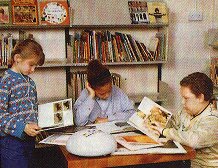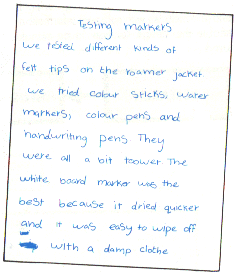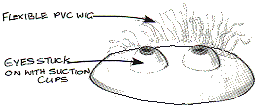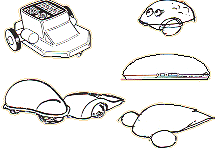
|
Feedback Form
| Introduction | Design | Ideas | Design & Control |
Project Suggestions |
| Design Process | Design Brief | Evaluation | The Design | Design Review |
| Page 1 | Page 2 | Page 3 | Page 4 | Page 5 |
The Design
The Design phase aims to create a solution to the problem posed in the Design Brief. The phase concludes with sufficient information to enable the 'design solution' to be manufactured.
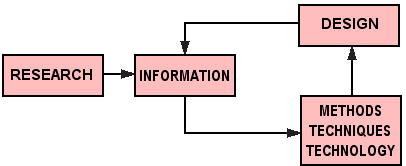
Methods, Techniques and Technology
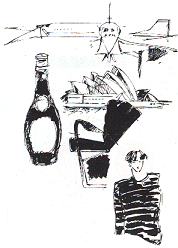 The
designers creative flair is at the heart of good design. It is essential
that this is harnessed to practical knowledge and experience of design
methods, techniques and technology. While these factors have principles
common to all design disciplines, each factor varies in its details.
The
designers creative flair is at the heart of good design. It is essential
that this is harnessed to practical knowledge and experience of design
methods, techniques and technology. While these factors have principles
common to all design disciplines, each factor varies in its details.
For example, all designers select materials but the range of choice and the importance of the decision are specific to their design discipline.
Crane designers choose materials to industry standards. Consequently, material choice is a routine matter. To the fashion designer, on the other hand, material selection is a fundamental creative decision.
Good designers know how to apply common principles yet have a thorough knowledge of the specifics of their design field. Their ability to assess what factors need to be considered is an imporfant skill (See here for factors relevant to Roamer design).
This 'Design' sub-section presents some of the methods, techniques and technologies relevant to Roamer, with examples of classroom work. It shows how these principles compare with commercial design applications. The section ends with illustrated ideas.
|
Information and ResearchDesigns are created from information. The designer will already know the information or can obtain it from various sources. Investigative ability is an essential skill of the designer. When developing the Design Brief Information and Research generally relates to clarifying the problem. During the Design phase Information and Research relates to the solution. 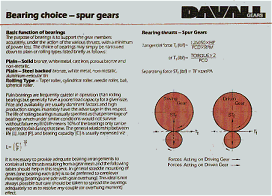
Manufacturers and suppliers of materials and goods often supply useful information in their catalogues. |
Reference books on a wide range of subjects are important sources of information.
Experimentation and research are important methods of establishing information. |
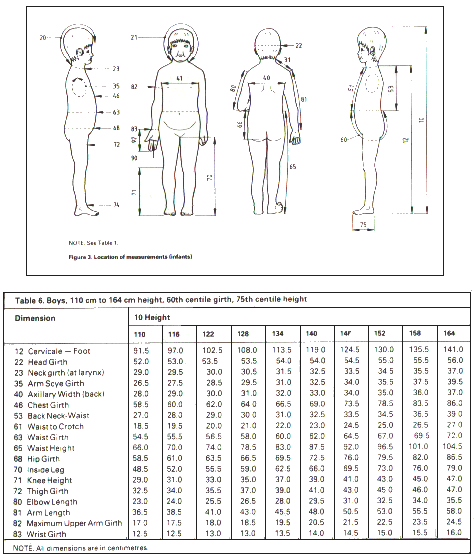 |
National and International Standards supply essential information. This type of data is vital to clothes designers and others creating products for infants. Extracts from BS 7231: Part 2 : 1990 are reproduced with the permission of BSI. Complete copies can be obtained by post from BSI Sales, Linford Wood, Milton Keynes. MK14 6LE. |
SketchingDesigners "think" through their pencil. Sketching helps designers to clarify and communicate their ideas. Even young children should be encouraged to sketchtheir basic Roamer design.
|
 Southmead Dog project sketches were developed into Roamer design ideas: Southmead School 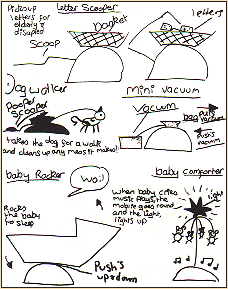 Ideas for designs by children of King Richard School, Portsmouth. |
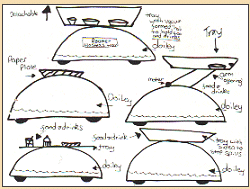 Sketches by Sarah of King Richard SCool show how the "Hostess" design idea developed. |
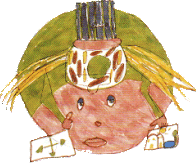 Design sketches of the explorer robot. |
Design Sub-Problems
| Complex designs, like Concorde, are broken down into many smaller design problems. In this case the different problems were solved by design teams working in Britain and France. |  |
 |
Because "Human knowledge doubles every six years", fact-cramming can not be the only teaching objective. Education needs to develop problem solving and thinking skills. One reason design is such a good educational medium is that it's about problem solving. Teachers familiar with Logo may have met the "Top Down" problem solving strategy, which involves taking complex problems and breaking them down into smaller, more manageable ones. This technique is very familiar to designers.
Complex projects, worked on by teams of designers, are deliberately broken down into sub-problems. However, even designs worked on by one designer will be consciously or subconsciously sub-divided.
Design Teams - Group Working
Most designs are created by teams combining ideas, expertise and experience. The advantage of group work is already familiar to teachers. Roamer design work is on excellent opportunity for using this method.
| Resolving a design into a series of sub-problems provides a natural basis for organising group projects within a classroom. |
 |
| Complex designs are split up into small design problems. The function of each sub problem needs to be defined. |
 |
|
| When cultures meet dramatic and exciting designs result. Clare Underwood's designs for perfume bottles were influenced by the bright colours, patterns, shapes and beadwork of African art |  |
Stimulation of Ideas
There are many techniques a designer may use to stimulate ideas or themes that provide a basis for a design.
Current Developments
Designers keep up to date with developments and innovations by reading technical literature and attending conferences and exhibitions.
Children should be encouraged to discuss their designs. Roamer design projects will appear regularly in the Valiant "GO" Magazine.
Interactive Design
Sometimes professional designers use the interactive approach to solve design problems. Picking up objects and playing with them can lead to interesting ideas.
Different Cultures
Design has developed differently in various cultures. Looking at other cultures can provide dynamic ideas.
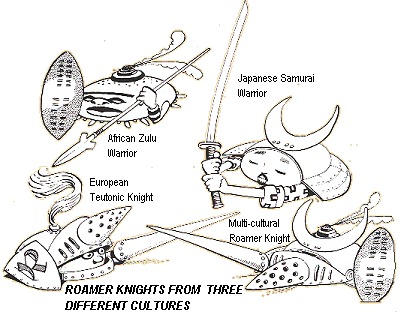
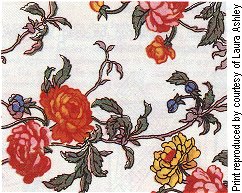 |
| Laura Ashley designs are distinctive for their use of floral patterns. |
 |
 Nature
stimulates more than decorative designs. London's Crystal Palace was
a revolutionary design. Built in 1851, its key structural elements
were inspired by a giant water lily leaf. Nature
stimulates more than decorative designs. London's Crystal Palace was
a revolutionary design. Built in 1851, its key structural elements
were inspired by a giant water lily leaf. |
Nature
Nature inspires many design ideas. Roamer characters based on animals, plants, etc; provide a new perspective on nature study, particularly when the child comes to program the Roamer's behaviour.
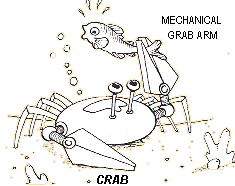


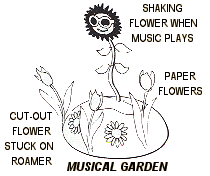
Historical Designs
Historical designs can be used with new technologies and materials. Visits to museums and books on design history are good sources of ideas.
 |
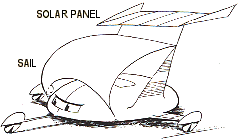 |
| Used as a major source of power in Europe since around 1150AD, the windmill became obsolete with the invention of the steam engine. The idea has now been revitalised in the form of wind-powered electricity generators. |
This futuristic land vehicle uses a sail as well as solar panels to power it. Some large modern ships have started using Hi-Tech sails to supplement their oil-fird boilers. |
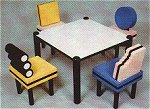 |
 |
| Sharon Wilson created this furniture design from the shape of Liquorice Allsorts sweets. | The design used to develop the "Flexator" pneumatic arm for disabled people by Jim Hennequin of Inventaid was also used on the automated figures at the "Spitting Image" museum Rubber Works. |
Fresh Approach
Sometimes designers become trapped looking at things in a particular way. They need to constantly question the basis of designs and consciously search for new perspectives to enable them to find exciting new solutions.
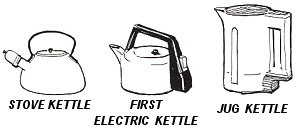 |
| The round shape of the stove kettle was stable when seated on a cooker and provided a large area for conducting heat. The first electric kettles copied this design. The jug kettle was a fresh approach. It allowed water to be boiled for a single sup. The side handle was physically easier to use and prevented the user from being scalded when pouring out the water. |
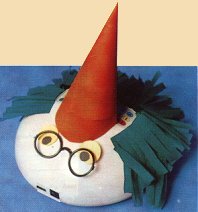 |
| A TYPICAL ROAMER DESIGN |
|
THINK BEFORE YOU GO ON TO THE NEXT SECTION! IN WHAT WAYS COULD YOU DRAMATICALLY CHANGE ROAMER DESIGNS? |
| Back to top |
|---|
